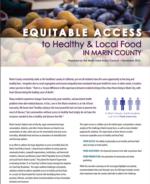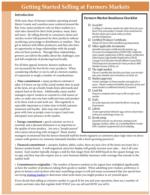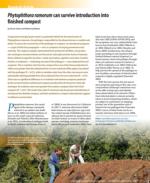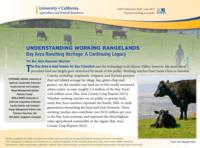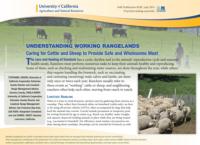Publications
Local stories on agricultural diversification - As part of the Fall 2015 Honoring Agricultural Diversification conference, our Sustainable Agriculture Team of Julia Van Soelen Kim, Paulette Swallow, and Vince Trotter, produced 11 video interviews to highlight the individual and collective accomplishments of the agricultural community to diversify farming operations. Hear from these hard working, entrepreneurial, and creative individuals:
Learn about invasive plants and insects - In partnership with the Marin Agricultural Department, Janice Alexander, our Forest Health Educator, produced this three-part Public Service Announcement video series introducing you to the concept of invasives and your role in helping to prevent their spread. Learn more about stopping the spread of invasive plant pathogens such as Sudden Oak Death:
Equitable access to healthy and local food in Marin County – Culminating 18 months of research and community dialogue, this Marin Food Policy Council publication makes the case for increasing the availability and access to healthy local food in Marin. Learn more about specific community needs and the policy and program opportunities that will reduce missing meals and increase health and well-being countywide (read the report).
Carbon in creeksides – Restoring trees and shrubs along Marin’s streams and rivers provides important protection against erosion and critical habitat for a diversity of wildlife. Restored streams are also a repository for sequestered carbon, providing offsets for greenhouse gas emissions. Our Watershed Management Advisor David Lewis and co-authors summarize their research on the amount of carbon that can be accrued by restoring area streams in Mitigating Greenhouse Gas Emissions Through Riparian Revegatation (read the publication).
Getting started selling at farmers markets – This is the go-to factsheet for any farmer or rancher interested selling at Marin’s many farmers markets. Vince Trotter, our Agricultural Ombudsman, produced this Grown in Marin factsheet as primer and checklist, making it easy for interested agricultural producers to prepare for selling to the public at a market. This is one of many custom factsheets made for Marin County farmers on topics ranging from Establishing a Cheesemaking Facility to Tips on the Organic Certification Process to Rainfall Capture and Storage for Marin Agriculture (view the factsheet).
Producing and selling eggs in Marin County - This is an update to the original factsheet providing the most recent information needed to produce and sell eggs in Marin, including sizing and labeling. Vince Trotter, our Agricultural Ombudsman, brought this tested resource up to date so egg producers can have each dozen ready for their customers (view the factsheet).
Phytophthora ramorum can survive introduction into finished compost - This is an important follow-up article regarding the risks of spreading the agent that causes Sudden Oak Death (SOD). Authors Steven Swain, our Environmental Horticulture Advisor, and Dr. Matteo Garbelotto, present their research on the potential for re-introduction of Phytophthora ramorum to finished compost with implications for handling municipal and backyard green waste (read the article).
Phytophthoras in native habitats – This new webpage is fundamental to understanding new and emerging plant disease agents and how native plant nursery operators and habitat restoration practitioners can prevent their spread. Janice Alexander, our Forest Health Educator, working with the newly formed Phytophthora Working Group, compiled this webpage to meet the education and management needs of those working in native plant and ecological restoration (view the website).
The Heritage of Bay Area Ranching – Stephanie Larson, our Livestock and Natural Resources Advisor, and co-authors have compiled in one place a summary of the extent and positive impact of ranching across the region. This is a useful reference for anyone exploring the context and background of agricultural land use in the area (read the publication).
Caring for cattle and sheep – For someone new to animal agriculture and grazing livestock, or for the seasoned producer just looking to review and refresh their operations, Caring for Cattle and Sheep to Provide Safe and Wholesome Meat by Stephanie Larson and co-authors, is an easy to read summary. It will walk you through typical animal husbandry tasks and their importance in the production of safe food and protection of the environment (read the publication).
Newsletters:
If you want to catch up on the past year's issues of our three newsletters, find them here:
- Grown in Marin News: Fall, Winter, Spring, Summer
- The Leaflet: Fall, Winter, Spring, Summer
- California Oak Mortality Task Force Newsletter: bi-monthly issues
Subscribe to these newsletters and join our mailing list here.
Websites:
Clientele access to our online resources continues to grow. Combined, our websites received more than 470,009 views in 2016. For more research-based information on Marin agriculture, oak tree and forest health, community gardens, how to save water in the garden, and other topics, visit our up-to-date program websites:
Return to the UCCE Marin County 2016 Annual Report homepage or view the UCCE Marin website


